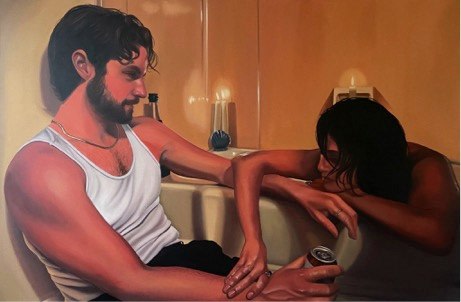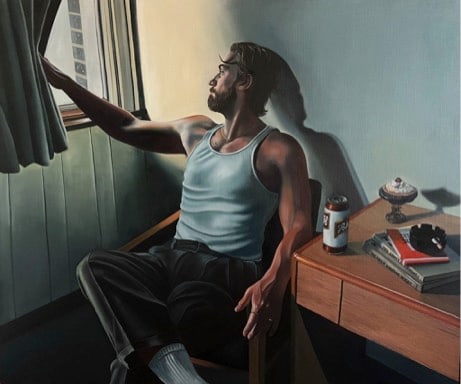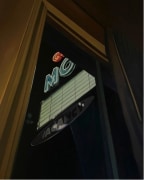
Thérèse Mulgrew
Room 126
March 31 - April 29, 2023 Opening Reception: Friday March 31st, 6-8 pm
Freight + Volume presents Room 126, an exhibition of recent paintings by Thérèse Mulgrew. Room 126 will be on view at 39 Lispenard St. Tribeca, New York, NY 10013. The opening reception will be on Friday, March 31, 2023 | 6:00 - 8:00 PM. This is Mulgrew’s second solo exhibition with the gallery.
Thérèse Mulgrew's paintings portray states of vulnerability at their most intimate. Using forms of narrative portraiture that incorporate cinematic perspectives as much as painterly techniques, Mulgrew's works trouble the idea of a disinterested gaze. Throughout Room 126, the narrative aspect of Mulgrew's artistry—the sense that all the scenes revealed in her paintings relate back to a wholly involved viewer—lends her work the richness of an undiscovered world.
Inspired by filmmaking devices such as framing and mise-en-scène. Mulgrew's high definition way of depicting the accoutrements of a single hotel room gives way to a sort of luminous symbolism which doesn't discard the significance those objects hold in everyday life. Holding, in fact, is an essential thread running through Mulgrew's series. Much of the dramatic, larger-than-life weight that radiates from her canvases derives from how she renders objects that are made to be rested on, held, touched. Viewers can viscerally feel a tactile quality emanating from the sheen of the wood in a painting like Bedside, for instance. In fact, all the objects depicted in Mulgrew’s paintings—bedsheets, ashtrays, telephones, beer cans, books—seem to leap out to the viewer, asking to be caressed and then put gently back into place. This haptic sense of realism cuts across not only to Mulgrew's still lifes, but appears in her portraits as well. The work Waiting II shows a man in the throes of uncertainty: a state of boredom verging on despair. Although his eyes are concealed from the viewer, every aspect of this figure seems to reach out towards the gaze of the person looking at him. Every detail of the painting—from the rings on the man's hands, to the folds of his shirt, to the tabletop surface he leans against—spells out a potential tactility. Because the man's eyes are covered over, the act of gazing itself becomes free-floating desire, making everything surrounding him all the more impactful and intimate.
Mulgrew's work communicates an eerie disquiet that is not without a personal, melancholic touch. She invites us to reach out into the web of objects she paints, to enjoin in their narratives, and to participate in a story where the viewer viscerally feels the emotions carried by her figures. Absorbing the objects and persons inhabiting Room 126, the viewer transforms into an experiencer, and participates in a shared communion that is more than strictly visual in nature.





















